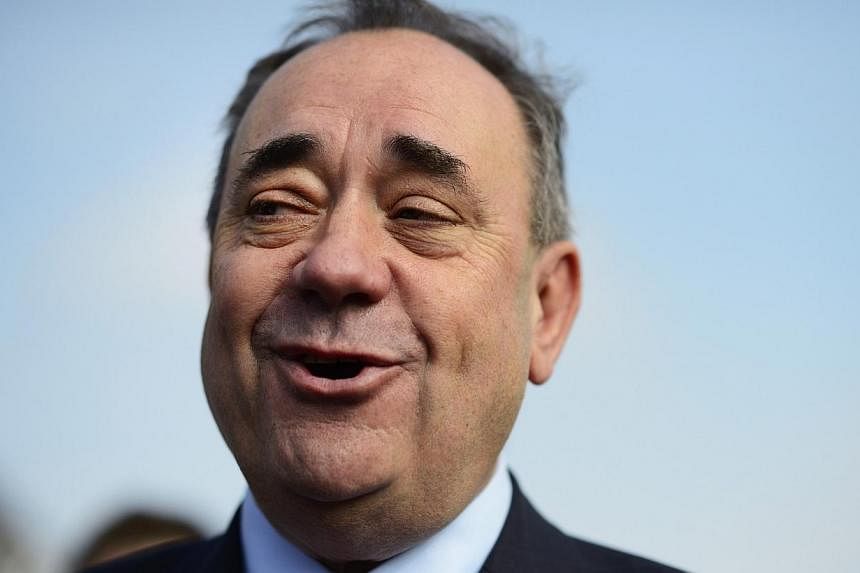ALEX Salmond wields no claymore sword and appears only sparingly in a kilt, and yet he has brought Scotland closer to independence than any Scottish warrior since union with England more than 300 years ago.
The leader of the Scottish National Party (SNP) and First Minister of Scotland has used guile, charm and persistence over many years to build a movement for independence. Here are 10 things to know about Salmond:
1. He was born Alexander Elliot Anderson Salmond on New Year's Eve in 1954 to civil servant parents. He was raised in government-subsidised housing in the ancient and royal burgh of Linlithgow, near Edinburgh.
2. He studied medieval history and economics at St. Andrews University, where he encountered the perks of the privilege. St. Andrews has long been popular with upper-class English students - Prince William studied there much later - and people close to Salmond say the experience made him resent any suggestion of rich southerners trying to direct Scotland.
3. He joined the SNP in 1974 when he was a 20-year-old undergraduate, reportedly because of a row over politics with his then-girlfriend Debbie Horton, who was secretary of the university's Labour party. She reportedly told him: "If you feel like that, go and join the...Scots Nationalists.' And he replied: "See if I don't!"
4. After graduation in 1978, he began a career in economics, working for the Scottish Office and the Royal Bank of Scotland.
5. Salmond played a key role in the '79 Group, a Republican faction in the SNP which wanted to set up a Scottish Socialist republic and spent several years fighting for more radical policies within the SNP. But the group was eventually banned and its leading members including Salmond were expelled from SNP in 1982. They later rejoined SNP and Salmond was elected to party office, the start of his rise up the ranks to become its leader.
6. He won the Westminster seat of Banff and Buchan in 1987 - and notably getting himself banned from the Commons chamber for a week after interrupting the chancellor's Budget speech in protest at the introduction of the poll tax in Scotland.
7. When Gordon Wilson stood down as SNP leader in 1990, Salmond contested and won the leadership. He repositioned the SNP as more socially democratic and pro-European.
8. He quit as SNP leader for four years in 2000 to focus on Westminster after a falling out. After his return to the party in 2004, he capitalised on growing unhappiness with Labour to beat the national ruling party by a single seat in 2007, becoming First Minister at the head of a minority Scottish government.
9. Salmond enjoys horse racing and has appeared as a pundit on Channel 4's The Morning Line programme. He has also offered tips and insights through the pages of the Racing Post.
10. He met his wife Moira when he joined the Scottish Office in the 1970s. She was 43 and he was 26 when they married in 1981. The couple have no children.
SOURCE: BBC, REUTERS, DAILY MAIL

